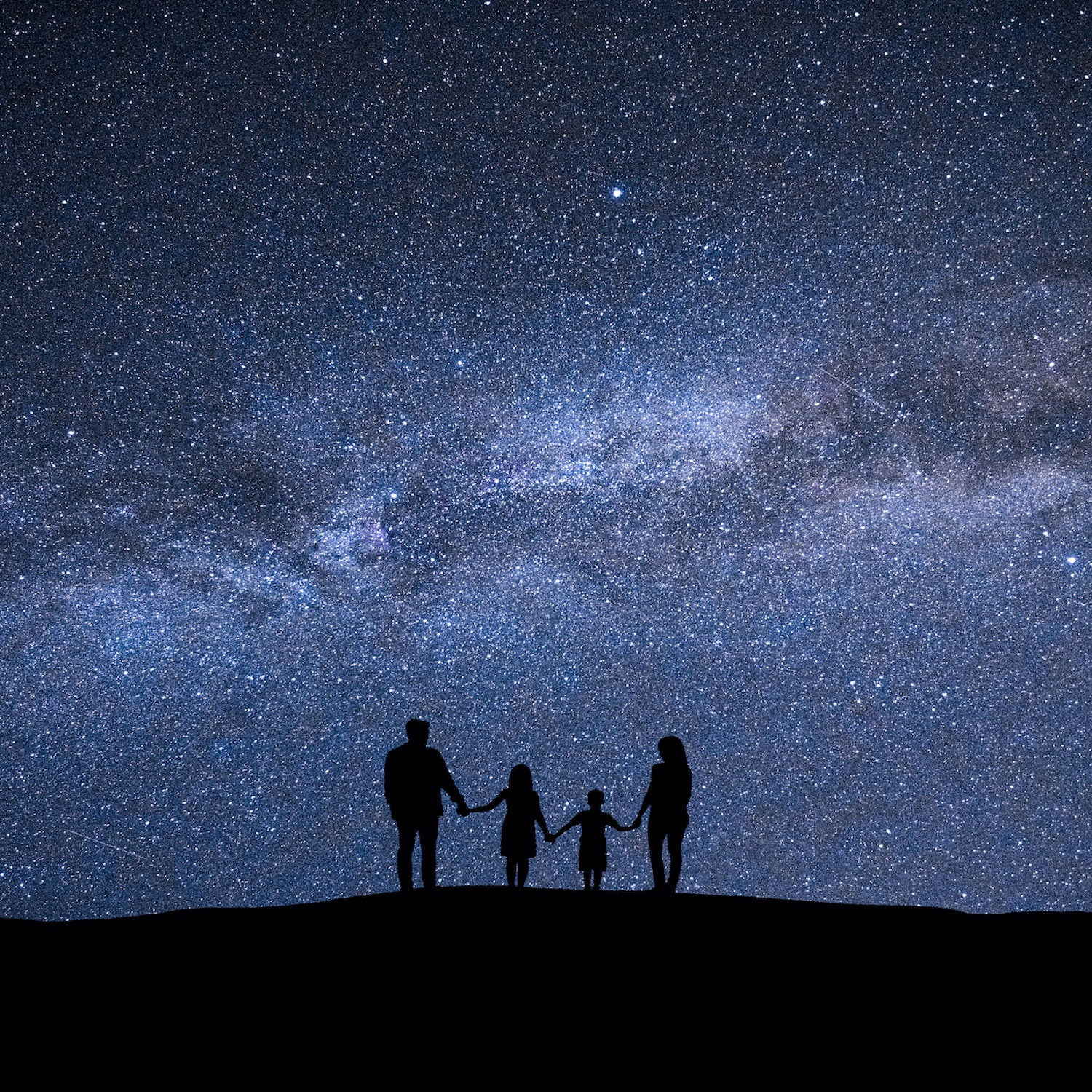Last fall, my husband and I decided to take our toddler camping in a remote part of Utah—far from the nearest town, far from the crowded national parks, far from anything, really. Campfires were banned because of drought, and I was bummed that we wouldn’t get to do the whole s’mores and roasted hotdogs thing. My disappointment didn’t last long, though. Shortly after the sun set, the sky exploded above us. The stars were so numerous and bright they were almost psychedelic, and the night sky felt enormous spread over the open desert. Undistracted by the flames of a campfire, we lay on our backs, picked out constellations, told stories, and simply stared in wonder.
Such experiences are increasingly rare in our lit-up world. Two out of every three Americans from their homes in light-polluted cities, which means that, unless caregivers intentionally introduce kids to the night sky, children may grow up without the sense of awe and connection that gazing at the cosmos has inspired for thousands of years.
A stargazing sojourn is an inexpensive and enchanting way to break up summertime monotony. For ideas on how to make it happen, I consulted a new book called by Chris Salisbury, an outdoor educator who’s spent 25 years taking kids on nocturnal adventures. The book gives adults ideas for activities to get kids outside after the sun goes down, from night hikes to trapping moths. It’s also a fascinating meditation on humans’ relationship with darkness and how it’s changed over time. As Salisbury writes, “We impoverish ourselves by avoiding the darkness.”
So, if you’re ready to enrich your child’s life with the dark—or at least, with some stargazing—here’s where to start.
Find a Dark Sky
First, you’ll want to look at a and choose a night with a new or crescent moon—any moon phase bigger than that will be so bright it obscures stars and planets. Next, consult the International Dark-Sky Association website to figure out which of their are closest to you. If there isn’t one within striking distance, of light pollution can help you find the next best thing. And finally, don’t forget to check the weather forecast—you don’t want rain or clouds to (ahem) put a damper on your sky-watching party.
Ditch Your Headlamp
According to Wild Nights Out, it can take 45 minutes for our eyes to fully adjust to the darkness, and just a second of exposure to artificial light to disrupt this night vision. If you resist the urge to turn on your headlamp or flashlight for a while, you might be surprised by how well you can see, and how incredibly bright the stars seem. If you must have a light source, Salisbury recommends a simple for providing an unobtrusive glow.
Get Comfy
Make sure everyone in the family has warm clothes (if necessary) and a blanket or mat to lie on. Pack a thermos of hot chocolate or a bottle of lemonade and some special treats, and make sure everything is accessible in your pack. You don’t want to interrupt your stargazing by turning on a light to dig around for snacks or an extra layer.
Sprinkle in Some Science
Stargazing is an excellent opportunity to sneak some STEM into your kids’ summer: many kids already love the idea of outer space, and stargazing gives you a reason to teach them about the solar system, the speed of light, or basic principles of astronomy. Wild Nights Out offers excellent primers on these topics, as well as stories and information on constellations. Salisbury writes that the “dog star” Sirius, for example, is the brightest star in the sky not only because of its relatively close proximity to earth but because of the presence of a companion star, or “pup,” that boosts its shine. Sirius also helps you locate two constellations, Canis major and Canis minor, which first emerge during the “dog days” of summer and inspired numerous traditional tales about celestial wolves, foxes, dogs, and jackals.
Before heading out, you can also print customized star and planet maps from or to get an idea of what constellations will be visible from your location and what they look like. To take it a step further, have your kids make a using a compass, pencil, and paper.
Look and Listen
Places with dark skies also tend to be relatively quiet places—another rarity in our hyper-connected world. As you observe the spectacle overhead, take a few minutes to stop talking and listen to the nighttime sounds around you. You might hear the hoot of an owl, the swoosh of a bat’s wings, the croaking of frogs, the sawing of crickets, or even just the wind whispering through grass or trees.
Add a Cultural Component
For all of human history, the stars, moon, and planets have inspired stories, aided in navigation, structured calendars, and jump-started our imaginations. In addition to teaching kids about science, stargazing offers a great excuse to talk about human culture as well. Perhaps you can look up your own ancestors’ celestial mythology—an , for example, tells how the Milky Way came to be. Or see if you can find a story or poem from the Indigenous people whose land you’re on. If you’re in northern Arizona, for instance, you might tell your kids that you’re on the homelands of the Diné people, then explain how the Diné life. If you can’t find such information, Greek myths about the cosmos are readily available, such as the story of the .


